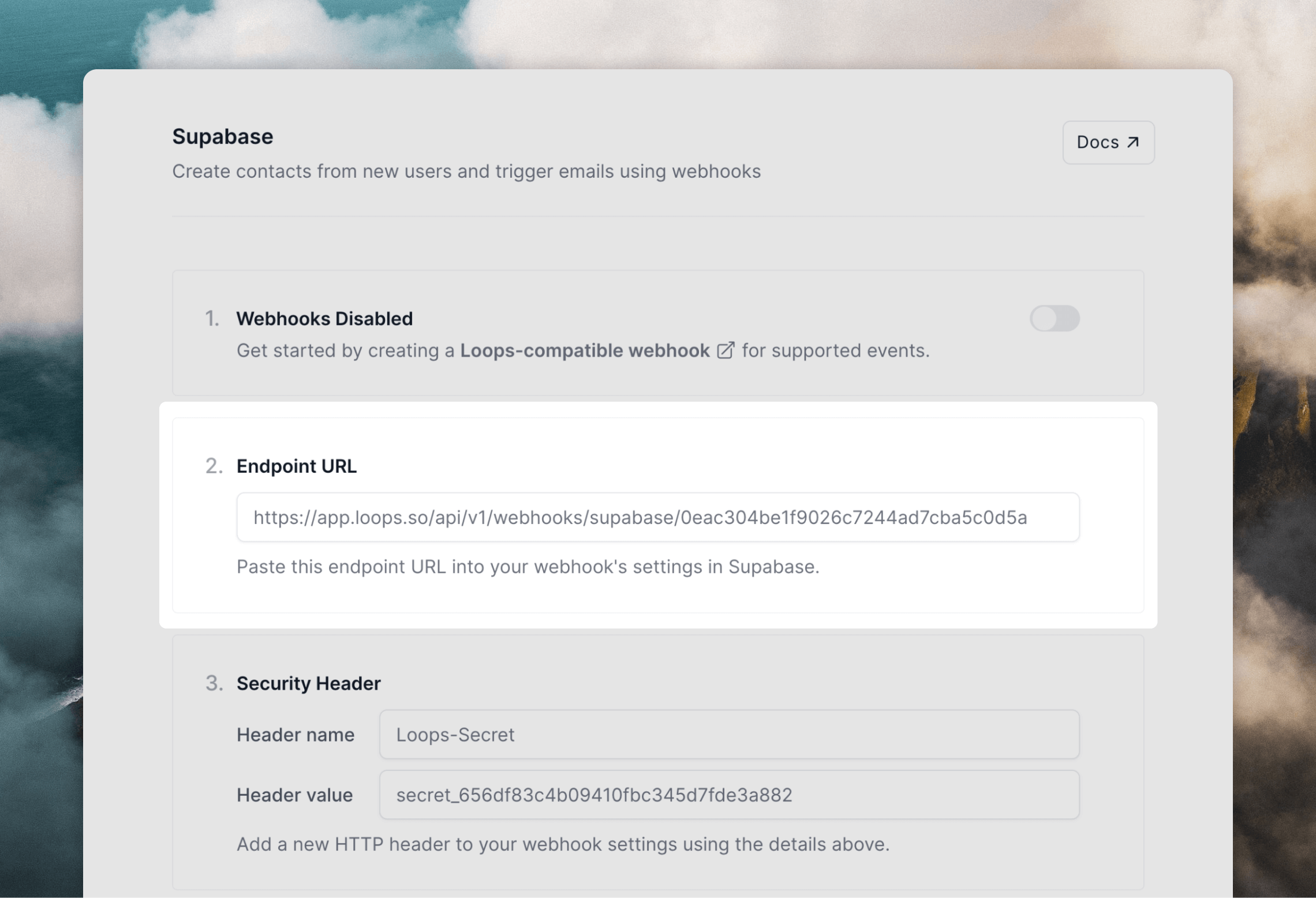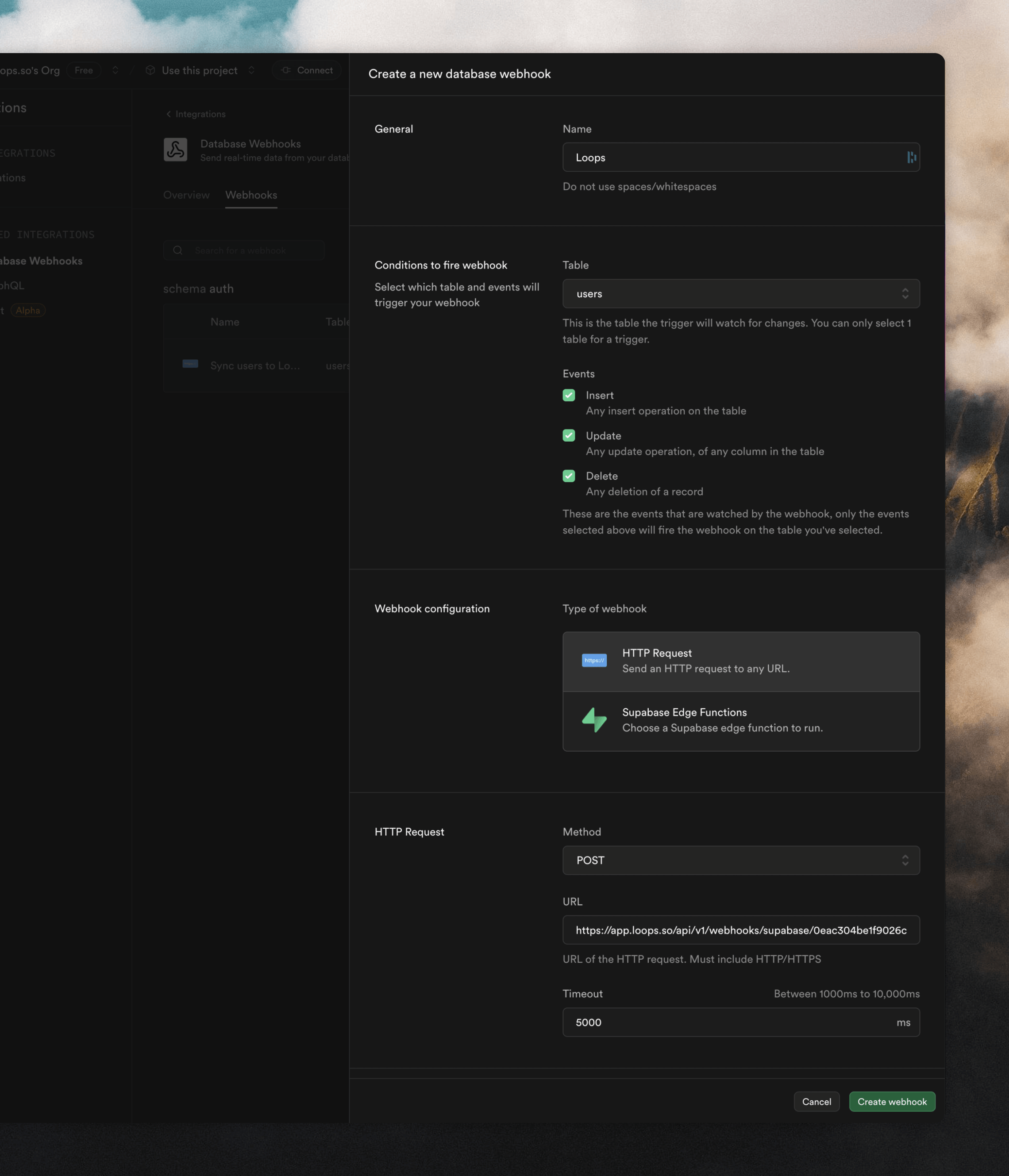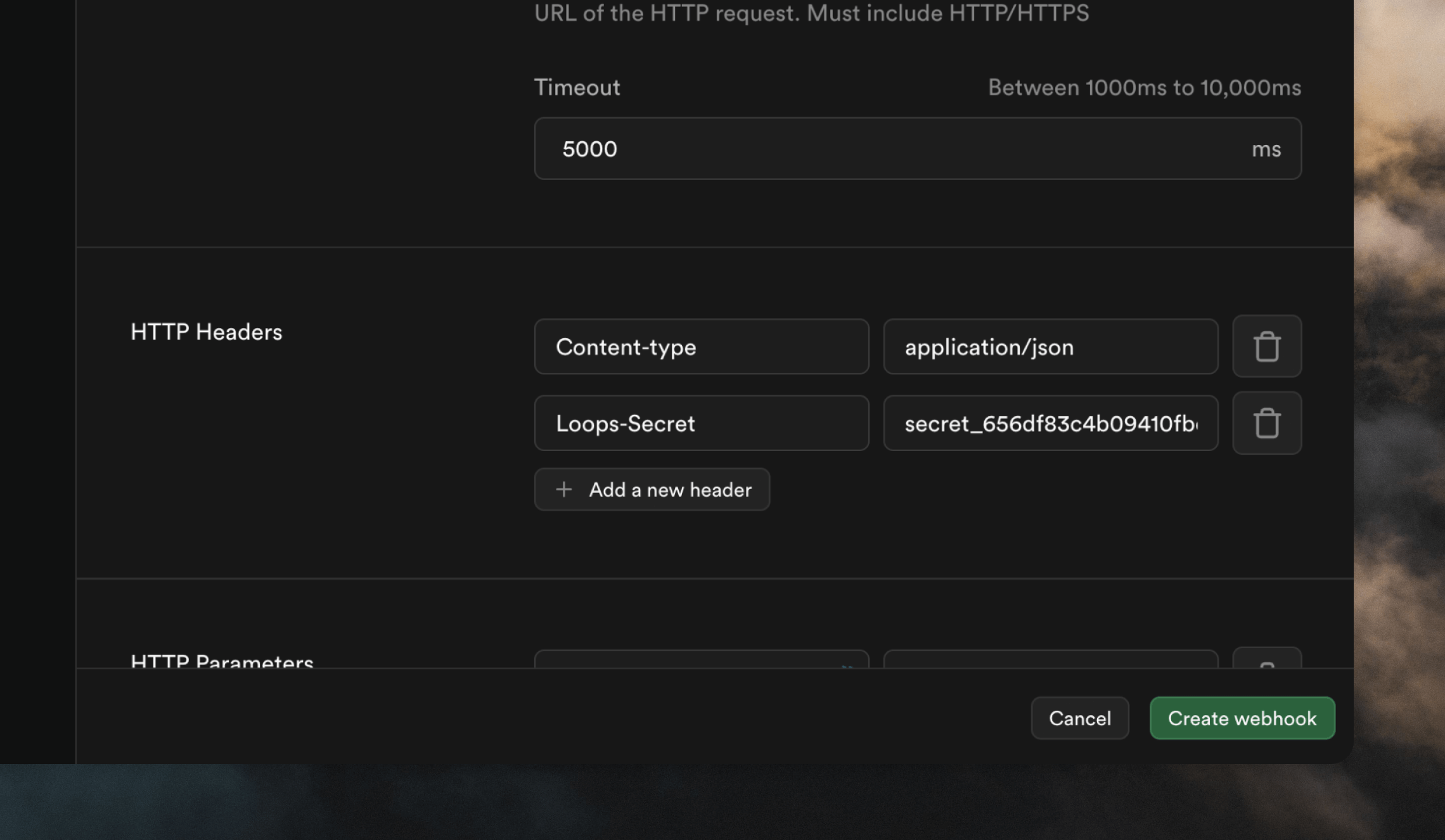If you are looking to send Supabase authentication emails with Loops, check out our Supabase SMTP docs.
Our Supabase integration lets you:
- Create and update contacts
- Send events to trigger loops
Supported events
We accept the following database events for theauth.users table:
INSERTUPDATEDELETE
Synced data
ForINSERT and UPDATE events, we sync the following Supabase data to your Loops contacts:
- User ID
- Email address
- First and last name (optional)
auth.users table. Key names should be first_name and last_name.
DELETE events can be used to delete or unsubscribe your Supabase users from your Loops audience.
Create a webhook endpoint in Loops
Follow the instructions here to create a new webhook endpoint, which will allow you to send webhook events directly to Loops.
Create a database hook in Supabase
Next, you need to set up database hooks in Supabase. Inside a project in Supabase, go to Integrations -> Database Webhooks -> Webhooks and click Create a new hook. Give a name to your webhook, select “auth users” from the Table dropdown, and select the event(s) you want to get webhooks for. Make sure HTTP Request is selected in the Webhook configuration section. In the HTTP Request section, paste in the endpoint URL from Loops into the URL field.


